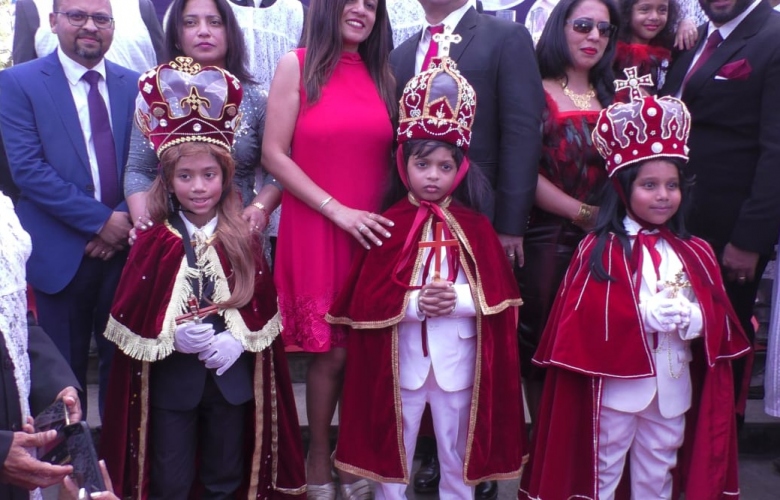
A file photo of children depicting Three Kings at Our Lady of Remedios Chapel at Cuelim.
The Feast of Epiphany also called the feast of ‘The Magi’ or ‘The Three Kings’ or ‘The Wise Men’ is celebrated universally in the Catholic Church with great devotion and reverence on January 6 or on the first Sunday in January, which falls on January 3 this year.
The feat commemorates the visit of the wise men to worship the baby Jesus. As per tradition, their names were Caspar, Melchior and Balthazar, who were astrologers and they were looking for the star that would lead them to the promised Messiah. They brought meaningful gifts, such as gold (which symbolises Jesus’ kingship), frankincense (symbolising Jesus’ divinity) and myrrh (symbolizes Jesus’ mortality).
The feast of the Three Kings is a very popular feast in Goa. It takes place in a lavish way in three villages of Goa, Reis Magos Church (Verem), Our Lady of the Mount Chapel (Cansaulim) and Church of Our Lady of Bethlehem (Chandor). The ‘Three Kings,’ boys between 8-12 years, dressed in elaborate clothing from decorative crowns to gowns, fit for royalty and seated on horses, symbolically enact the journey taken by the Magi and present the gifts to the baby Jesus.
Cansaulim
The feast is celebrated at the Chapel of Our Lady of the Mount, Nossa Senhora Dos Remedios, on top of the Cuelim hill (referred locally to as Remete Saibinicho Dongor). The chapel was founded by Fr Gonsalo Carvalho, a Jesuit priest in 1599 and is affiliated to St Thomas Church, Cansaulim.
Our Lady of the Mount is considered a protector of people, especially the married couples who cannot conceive children, who pray to her when they want children. It is believed that those who pray in this chapel receive sacred blessings and protection. Even the Hindus participate in the feast enthusiastically, bringing the Madonna garlands, flowers and other gifts, thanking her and also asking her for blessings.
The privilege of organising the feast is given to the Vangodd of the Gaunkars (the indigenous Goans) of the Communidade of Cansaulim, Arossim and Cuelim, for the help they rendered to the early Church.
Three boys, between 8-12 years, from these villages are selected to enact the role of the ‘Three Kings.’ They are dressed in elaborate clothing, from decorative crowns studded with glittering stones and gowns.
They start their journey from their respective homes, along with the retinue of attendants, led by a little boy beating the drum to the top of the Chapel. Crackers are lit as each procession is preceded by a brass band which plays along the route.
The first stop for the king from Arossim is in front of the chapel of St Lawrence. Here, the chaplain says a small prayer and blesses them. From there, the entourage continues along an age-old path till he reaches to the foot of the hill in Cuelim.
The other two meet him here and after a short rest ascend to the top of the hill in time to attend the Feast Mass. They participate in the Mass, which is held outside due to increased attendance and present their gifts.
After the Mass, the three Kings leave the chapel, stopping at different places for blessings and rest. The journey finally ends at St Thomas Church, where Laudate is sung and three Bonderam (flags) are waved from right to left. Then they depart for their homes, taking different paths.
Verem
The feast of the Three Kings is celebrated at Reis Magos Church in Verem. The story of the Three Kings is enacted by three youths of the locality, who dressed as Three Kings, begin a procession that starts from the church and goes around the village.
Chandor
In Chandor, three young boys either selected or volunteers from the villages, decked in royal attire and holding gifts and seated on horses enact the journey of the Three Kings.
The procession with their family members and bands playing loud music starts at the chapel of our Lady of Piety on Monte Cota, which ends at Nossa Senhora de Belem Church, Church of Our Lady of Bethlehem, where they attend the high mass and present their gifts. It is said that earlier, the kings were brought down the hill sitting on buffaloes.
(The writer is former director of Thomas Stephens Konknni Kendr at Porvorim)